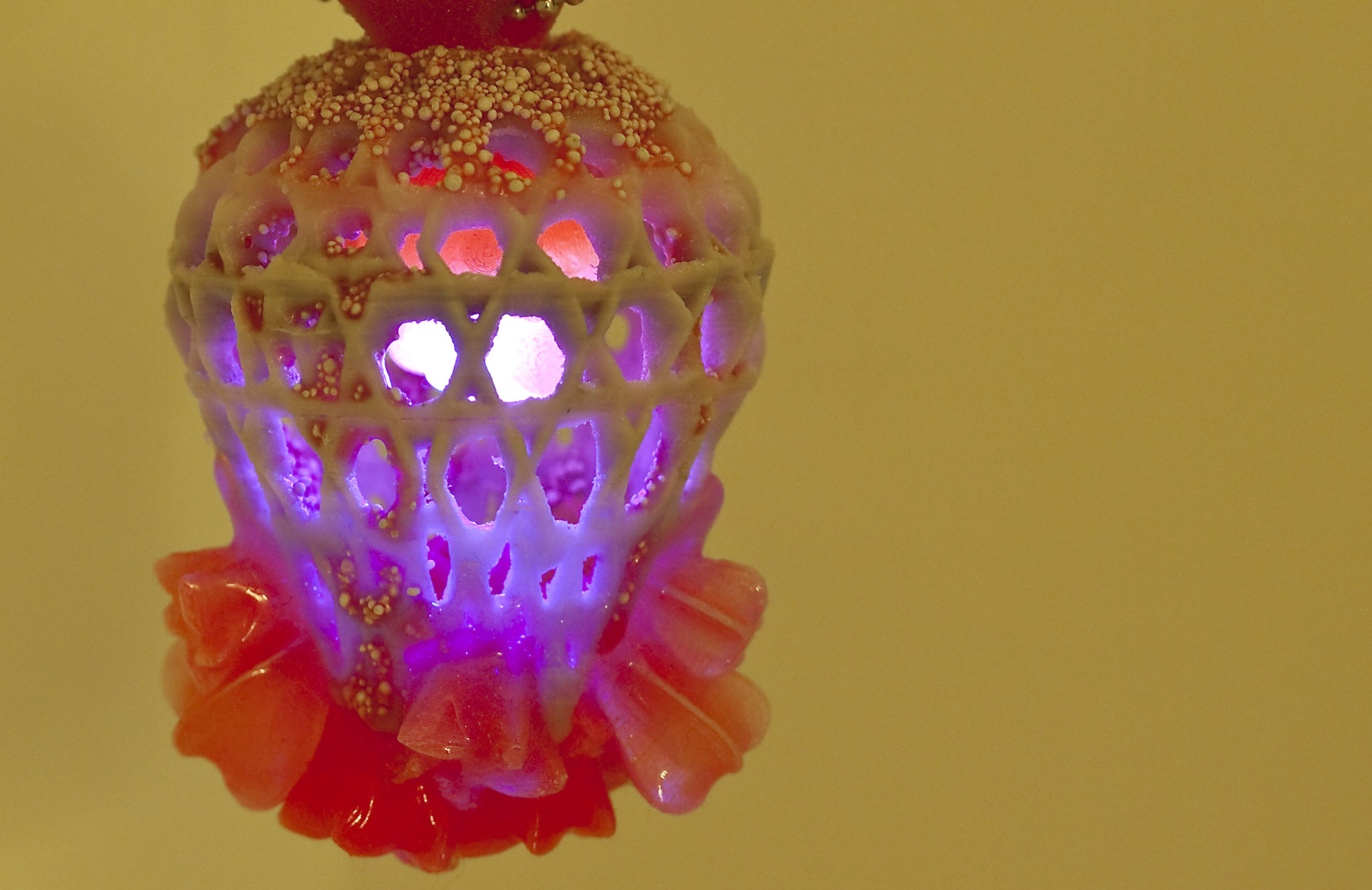After the recent pause in posting on this Blog mainly due to my crazy exhibition/teaching schedule, I am now picking up the pieces and emerging from the rubble which used to be my studio (left as it was after another all-night jewellery making session in October). Thoughts are turning to Christmas…and what could potentially be put into my stocking by Santa (or more likely myself – high tech gadgets at this price are a hard sell for the nearest and dearest).
Enter the MakerBot Replicator 2. Now, in my enthusiasm to learn all about microcontrollers, electronics, lasers and ‘how things work’ (culminating in the addition of the label ‘tinkerer’ after the much-contemplated ‘jewellery artist’), I was all up for downloading the plans for one of the weird and wonderful RP machines off Thingiverse, or even getting myself a kit of the pre-cut parts and assembling it myself. In fact, I was quite excited by the prospect of doing so – I even looked into booking myself into a workshop run at Manchester University to take the edge off risking potentially disasterous RP results and for a bit of guidance. And I may still pursue this avenue one day – a girl can never have too many cool machines to play with, right? After all, the philosophy behind open-source technology is that it’s self-replicating – meaning that if you have one to do the donkey’s work of printing all the parts, you could theoretically make as many others as you like from it.
Yet, the array of choices and potential hacks seems daunting at this stage, and my research schedule is not going to magically grind to a halt while I learn all about the available RepRaps in the world. Two printers are up for consideration, the UP!Plus V1.3 and the brand new MakerBot Replicator 2. I have had a go at using the UP!Plus at University, with actually really great results (compared to rather messier ones I have seen done on other RepRap machines). I print mostly very fragile structures, with diameters of 1mm and 2mm pushing the machine to the limit, and the UP!Plus deals with those beautifully. Prising them off the heated bed after printing with a pallette knife is actually a lot harder than it sounds and has resulted in some breakages, which I would rather avoid in the future. The UP!Plus Printer I have used at uni uses mostly ABS plastic. Whilst it’s cheap (great for the pockets) it’s not super environmentally friendly, and I actually do care about these things. I think we should be moving towards a cleaner future, and in my mind making objects out of plastic, no matter how fantastic they are, concerns me a bit. PLA has been touted as the greener alternative, being made from corn starch and sugar (although I am a bit sceptical about that myself, just as I am still doubting the green credentials of Biofuel), it also has the advantage of having a lower melting point than ABS, thus using less energy in the printing process. The lower working temperature means it’s easier to get off the bed, but also has the disadvantage of sometimes causing edge-curl on finished prints. Ideally I want ot get my hands on a machine that prints both, and the UP!Plus V1.3 now can do so.
So what do I like about the MakerBot Replicator 2? The allegedly wafer-thin layers are a huge draw, especially considering the scale of my work. Having seen videos of the machine in action, the print speed seems incredible. I also like it’s sturdy construction, no-fuss out of the box setup and removable print platform (a point of irritation with the UP!Plus). I am not going to mention the funky integral LED lighting at this point, as a true tinkerer and budding geek should not be concerned with such trivialities (LOVE it!!). Price-wise the two machines seem pretty equally pitched, with the MakerBot having a slightly larger print area. But before making a decision, it would be good to see it ‘in the flesh’ and maybe do a test print or two to compare the results side by side. Also, the MakerBot can only print PLA, so I would have to test the material for my application before deciding. Most home RPs need to be tuned to get the best possible results, a task I am not sure I am capable of yet. But as they say, you grow with the challenges thrown your way.
Altogether I am undecided – at this point having either one in my studio would make me ecstatic…are you listening Santa???



